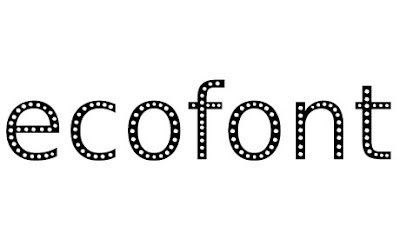
The ecofriendly font that saves on ink
Sometimes, life's simplest innovations can turn out to be the most useful: cats' eyes on roads, Post-it Notes, Velcro – the sorts of things that cause a sigh of frustration for not having thought of it yourself.
Embracing blissful simplicity as a creative aide, Dutch communications company Spranq have designed a new environmentally friendly font, that looks like this:
The Ecofont saves on printing ink by … well, using less of it. Letters in the freely downloadable typeface contain multiple small circular holes, meaning that each letter requires less ink to be printed. As the designers put it: "After Dutch holey cheese, there now is a Dutch font with holes as well." Quite.
Though rather striking, the typeface is wholly readable (no pun intended) and is, apparently, most effective at nine or 10 point. It's also sans serif, because, of course, the little flourishes on serif fonts will use up more ink when being printed.
Spranq claims that the Ecofont will reduce ink use by up to 20% - not bad for something that was developed over "lots of late hours (and coffee)".
Perhaps the most intriguing thing about the font is the question it raises: why hasn't anybody thought of this before? It appears to be one of those blindingly obvious innovations that simply slipped under the radar all this time.
As it's now widely accepted that printing should be minimised, there seems little reason as to why most homes and workplaces couldn't switch some or all of their printing to the new typeface, thus saving themselves some cash and doing the environment a small favour.
Obviously, the font shouldn't be viewed as a licence to print more than you normally would, however economical it may be. In fact, Spranq actively encourages printing as little as possible and "hopes to increase environmental awareness" through the Ecofont.
All right – a new typeface isn't going to solve the planet's problems, granted (and it might not be the best choice to use in a cover letter for that dream job), but surely innovative thinking like this is a positive step in conservation on any scale? I'll leave it to you to decide: the Ecofont – example of everyday genius or waste of valuable thinking time?


No comments:
Post a Comment